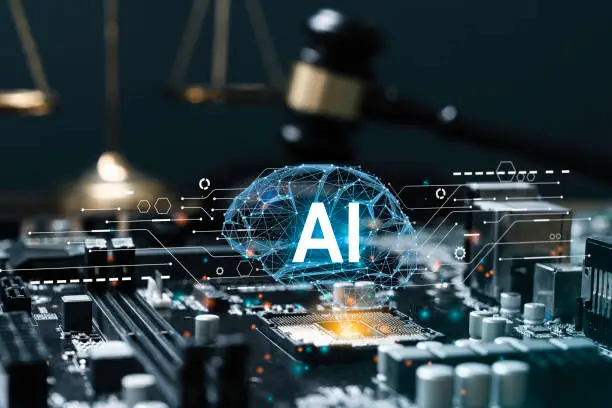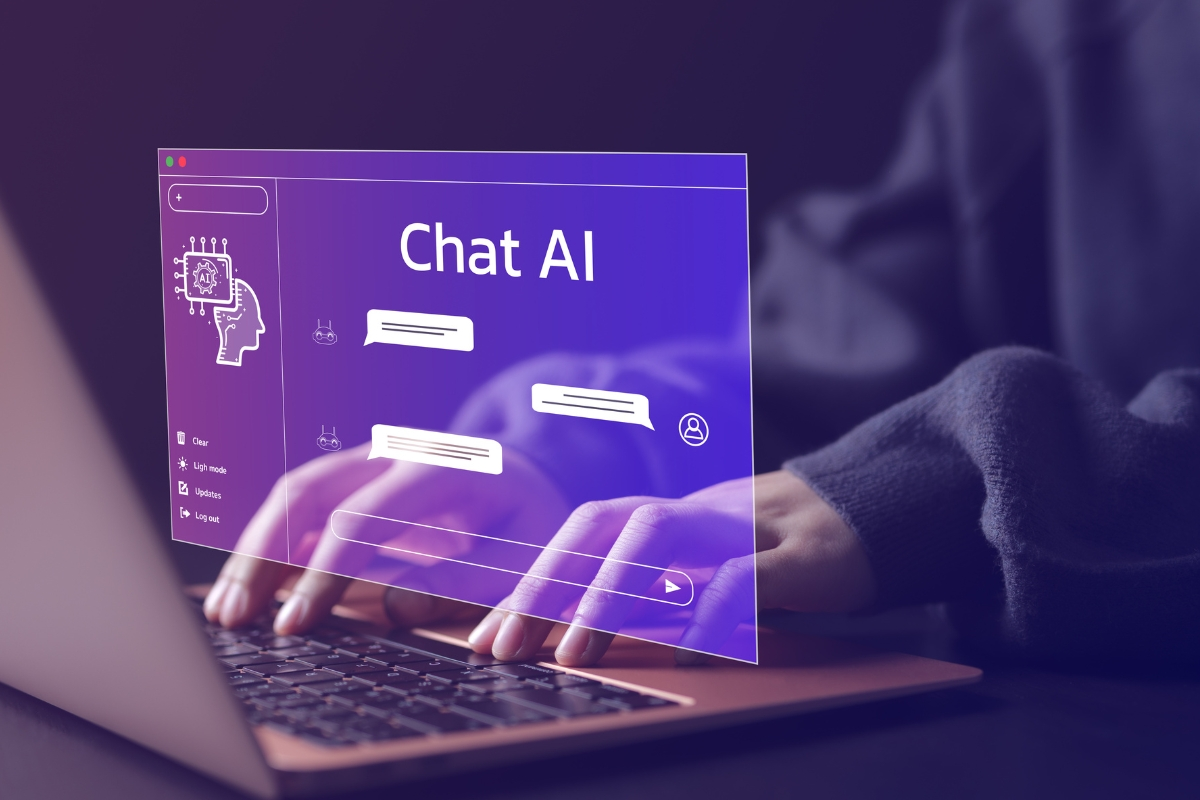Imagine building a powerful AI system, but having no clue how well it functions. That’s the challenge without AI monitoring. Artificial intelligence (AI) is revolutionizing everything from facial recognition to self-driving cars. But AI systems are complex and opaque. AI monitoring is the watchdog we desperately need. It’s about continuously assessing an AI system’s performance and identifying potential problems. Monitoring helps us understand how AI systems make decisions, detect biases, and ensure they operate as intended.
Table of Contents
Importance and Benefits of Artificial Intelligence Monitoring
Let’s face it; artificial intelligence (AI) can be a double-edged sword. While AI offers incredible potential, unmonitored AI systems can pose serious risks. Artificial intelligence monitoring isn’t a luxury; it’s a necessity. Here’s why:
Guaranteed Performance
Imagine an AI-powered stock trading bot making bad decisions because of a hidden glitch. Monitoring helps identify performance issues and guarantee your AI system functions optimally.
Bias Detection and Mitigation
AI algorithms aren’t immune to bias. Monitoring can uncover biased decision-making in your AI system, allowing you to correct the course and ensure fairness.
Security and Transparency
AI systems handle sensitive data. Monitoring helps detect security breaches and maintain transparency in how your AI system operates. This builds trust and confidence.
Improved ROI
A poorly functioning AI system is a money pit. Monitoring helps you identify areas for improvement, optimize performance, and maximize the return on your investment in AI.
Components of Artificial Intelligence Monitoring

AI monitoring isn’t magic. It relies on a robust framework. Here’s a breakdown of the key components:
Data Collection and Integration
This is ground zero. Monitoring requires comprehensive data about your AI system’s performance. We’re talking input data, model outputs, and system logs. Integrating this data seamlessly is crucial for meaningful analysis. Artificial intelligence monitoring is a data hungry beast. To function effectively, it needs a steady stream of high-quality information. Here’s how we collect, clean, and integrate this data:
Sources of Data for Monitoring
Cast a wide net. We gather data from various sources:
Input data: The raw information fed into your AI system. Think of it as the fuel for your AI engine.
Model outputs: The predictions or decisions your AI model generates.
System logs: The internal logbook of your AI system, recording events, errors, and performance metrics.
Data Preprocessing and Cleaning
Raw data is rarely perfect. We clean and pre-process it to ensure accuracy and consistency. Imagine washing a car before applying a shiny coat of wax. Clean data leads to reliable monitoring results.
Integration with AI Systems
Seamless is key. The collected data needs to flow smoothly into your Artificial intelligence monitoring framework. This integration ensures real-time monitoring and timely identification of any issues.
Model Performance Monitoring
The heart of the matter. We scrutinize how your AI model is making decisions. This involves tracking metrics like accuracy, precision, recall, and f1 score. Are your predictions on target? Monitoring helps identify and address performance issues. It is the crown jewel of AI monitoring. Here’s how we ensure your AI model stays sharp and unbiased:
Monitoring Model Accuracy and Performance
Are your AI predictions hitting the mark? We track core metrics like accuracy, precision, recall, and F1 score. Think of it like checking the accuracy of your watch. Monitoring helps identify performance degradation and fine-tune your model for optimal results.
Detecting Drift and Concept Shifts
The world dynamically changes. What worked yesterday might not work today. Monitoring helps detect drift (gradual performance decline) and concept shifts (significant changes in the underlying data). Imagine navigating a winding road. Monitoring ensures your AI model adapts to new realities.
Tracking Bias and Fairness
AI models can inherit biases from the data they’re trained on. We monitor for bias in your AI model’s decision-making. For instance, is your AI loan approval system unfairly disadvantaging certain demographics? Monitoring helps identify and mitigate bias, promoting fairness and ethical AI practices.
System Health Monitoring
Let’s not forget the engine. We also monitor the health of your AI system itself. Is it stable and operational? Monitoring tracks metrics like system uptime, resource utilization, and error rates. This ensures your AI system runs smoothly and reliably. Artificial intelligence monitoring isn’t just about the model’s brain. We also monitor the brawn – the underlying AI system infrastructure. Here’s how we ensure your AI system runs smoothly and reliably:
Infrastructure Monitoring
It’s all about keeping the lights on. We monitor hardware components like servers, storage systems, and network connectivity. Are they functional and operational? Imagine checking the engine gauges in your car. Monitoring ensures your AI system’s infrastructure is in top shape.
Resource Utilization and Performance
AI systems are resource-intensive. We monitor CPU usage, memory consumption, and network bandwidth. Are resources being utilized efficiently? Monitoring helps identify bottlenecks and optimize performance. Think of it like monitoring your fuel efficiency on a road trip.
Alerting and Incident Response
Even the best systems encounter hiccups. We set up alerts to notify you of potential issues like system errors, performance degradation, or security breaches. Prompt incident response is crucial. Imagine having a mechanic on speed dial for your car. Effective monitoring allows you to address issues before they snowball.
Challenges and Solutions
AI monitoring is a powerful tool, but it’s not without its challenges. Let’s confront these obstacles and explore effective solutions:
Scalability and Complexity
As AI systems grow more complex, monitoring can become daunting. Imagine managing a fleet of cars versus a single vehicle. The challenges and solutions further down the road are:
Handling Large Volumes of Data
As AI systems grow more sophisticated, monitoring can become overwhelming. Imagine managing the data flow of a bustling metropolis compared to a quiet village. Large-scale AI deployments generate massive volumes of data, making collection, storage, and analysis a challenge.
Solution: Embrace automation. Leverage automated monitoring tools that can efficiently collect and analyze data from various sources. Cloud-based solutions offer scalable storage and processing power, accommodating the growing demands of large AI systems.
Managing Complex AI Architectures
Modern AI systems are rarely monolithic beasts. They are often comprised of multiple interconnected components, each with its own monitoring requirements. Keeping track of performance and health across this complex ecosystem can be a challenge.
Solution: Implement a modular monitoring approach. Develop custom dashboards that centralize critical metrics from each AI component. This holistic view allows you to identify and address issues proactively.
Implementing Efficient Monitoring Solutions
Not all monitoring solutions are created equal. Inefficient tools can drain resources and hinder performance. Choosing the right tools for your specific AI system is crucial.
Solution: Carefully evaluate your needs and research available monitoring solutions. Look for tools that offer scalability, flexibility, and integration with your existing AI infrastructure. Regular maintenance and optimization of your monitoring system ensure it continues to operate efficiently.
Interpretability and Explainability
AI models can be opaque black boxes. Understanding why an AI system makes a particular decision is crucial. Imagine a doctor giving a diagnosis without explanation. AI models can be opaque, making it difficult to interpret their outputs and identify potential biases. Let’s explore how to increase interpretability and ensure compliance:
Interpreting AI Outputs and Decisions
Unlike a human expert, an AI model doesn’t explain its reasoning. This lack of transparency can be concerning. In financial loan approvals, for instance, a rejected loan application without a clear explanation can be frustrating for the applicant.
Solution: Invest in Explainable AI (XAI) techniques. These methods illuminate the inner workings of your AI model, providing insights into how it arrives at its conclusions. This allows you to identify and address potential biases in your AI system’s decision-making.
Providing Transparent Explanations
Even with XAI techniques, full transparency might be difficult. However, monitoring can help you communicate the rationale behind AI decisions in a way that is understandable to non-technical users. This transparency builds trust and confidence in your AI system.
Addressing Regulatory Compliance
Many regulations are emerging around AI fairness and explainability. Monitoring plays a crucial role in demonstrating compliance with these regulations. By tracking and explaining AI model outputs, you can mitigate legal risks and ensure responsible AI development.
Security and Privacy
AI systems handle sensitive data. Monitoring itself introduces security and privacy concerns. Imagine having your car keys accessible to everyone. AI monitoring deals with sensitive data. The security of this data and the privacy of individuals it pertains to are paramount. Let’s explore how to fortify yourArtificial intelligence monitoring system against security threats:
Protecting Sensitive Data
AI systems often handle confidential information, like financial records or personal details. Data breaches can have severe consequences. In healthcare, for instance, a data leak could expose sensitive patient information. Monitoring should include robust security measures to safeguard this data.
Solution: Implement multi-layered security protocols. This includes encryption of data at rest and in transit, access controls that restrict access to authorized personnel only, and regular security audits to identify and address vulnerabilities.
Ensuring Secure Communication
The flow of data between AI components and the monitoring system needs to be secure. Intercepted communication can expose sensitive information. For example, an attacker could tamper with data transmitted between self-driving cars and a central monitoring system, potentially causing accidents.
Solution: Enforce secure communication protocols like HTTPS that encrypt data transmission. This reduces the risk of unauthorized access or data manipulation.
Mitigating Risks of Attacks and Breaches
AI systems are potential targets for cybercriminals. A successful attack could compromise the integrity of your monitoring data, leading to faulty insights and poor decision-making. In facial recognition systems, a security breach could allow unauthorized individuals to manipulate the system for malicious purposes.
Solution: Maintain a proactive security posture. Stay up-to-date with the latest security threats and vulnerabilities targeting AI systems. Implement regular penetration testing to identify and address weaknesses in your monitoring infrastructure.
Implementing Effective Artificial Intelligence Monitoring

AI monitoring is a powerful tool, but its effectiveness hinges on proper implementation. Here’s a roadmap to navigate the key steps:
Selecting Monitoring Tools
Choosing the right tools is crucial. Consider factors like:
Scalability: Can the tool handle the growing data volumes of your AI system?
Flexibility: Does it offer the customization needed to align with your specific AI architecture?
Integration: Seamlessly integrates with your existing AI infrastructure for efficient data flow.
Evaluating Monitoring Platforms
Research and compare different monitoring platforms. Look for features like:
Real-time data visualization: Gain instant insights into your AI system’s performance.
Alerting and notification: Be promptly informed of potential issues for swift response.
Advanced analytics: Capabilities to drill down into performance metrics and identify root causes of problems.
Customization and Integration
A one-size-fits-all approach rarely works. Customize your monitoring solution to align with your specific AI needs. Ensure seamless integration with your existing AI infrastructure for efficient data collection and analysis.
Defining Monitoring Workflows
Establish clear workflows for data collection, analysis, and response. This streamlines the monitoring process and ensures consistent identification and resolution of issues.
Setting Thresholds and Alerts
Define performance thresholds that trigger alerts when metrics deviate from acceptable ranges. This allows for early detection of potential problems before they snowball.
Establishing Incident Response Procedures
Be prepared to react quickly to monitoring alerts. Develop a clear incident response plan that outlines roles, responsibilities, and escalation procedures. This ensures a coordinated and efficient response to any issues that arise.
Best Practices for Artificial Intelligence Monitoring

AI monitoring is an ongoing process. Continuous improvement is key to maximizing its effectiveness. Let’s explore some best practices to hone your AI monitoring skills:
Regular Assessment and Feedback
Don’t set your monitoring system on autopilot. Regularly assess its effectiveness. Are you identifying critical issues? Is the data actionable? Gather feedback from stakeholders across technical and business domains to refine your monitoring approach.
Iterative Model Optimization
AI models are living entities. They learn and evolve over time. Monitoring insights should inform iterative model optimization. Identified biases or performance degradation can guide retraining and refinement of your AI model to enhance accuracy and fairness.
Learning from Monitoring Insights
Monitoring is a goldmine of data. Analyze the data to uncover trends and patterns. These insights can inform broader AI development practices and improve the overall performance of your AI ecosystem.
Cross-functional Team Collaboration
AI monitoring is a team sport. Effective collaboration between data scientists, IT specialists, domain experts, and business stakeholders is crucial. Each team member brings a unique perspective to interpret data, identify issues, and implement solutions.
Sharing Best Practices and Lessons Learned
The AI community thrives on knowledge sharing. Actively share best practices and lessons learned from your AI monitoring experiences. This can help others avoid pitfalls and accelerate their AI development journey.
Building a Community of Practice
Consider establishing a community of practice around AI monitoring within your organization. This forum can foster ongoing learning, knowledge exchange, and collaboration amongst AI practitioners. A strong community elevates the collective expertise and drives continuous improvement in AI monitoring practices.
In conclusion, while artificial intelligence offers incredible potential, unmonitored AI systems can pose serious risks. AI monitoring is an essential safeguard that empowers you to harness the power of AI responsibly. By implementing a robust monitoring framework and following the best practices outlined above, you can ensure the integrity, fairness, and effectiveness of your AI systems, ultimately driving innovation and achieving success in the age of AI.
Also Read: Green Artificial Intelligence: The Future is Smart and Sustainable

